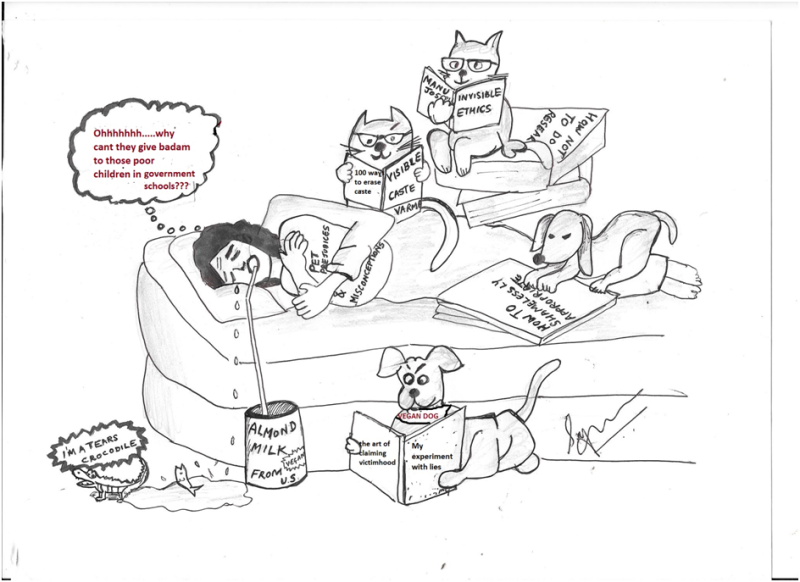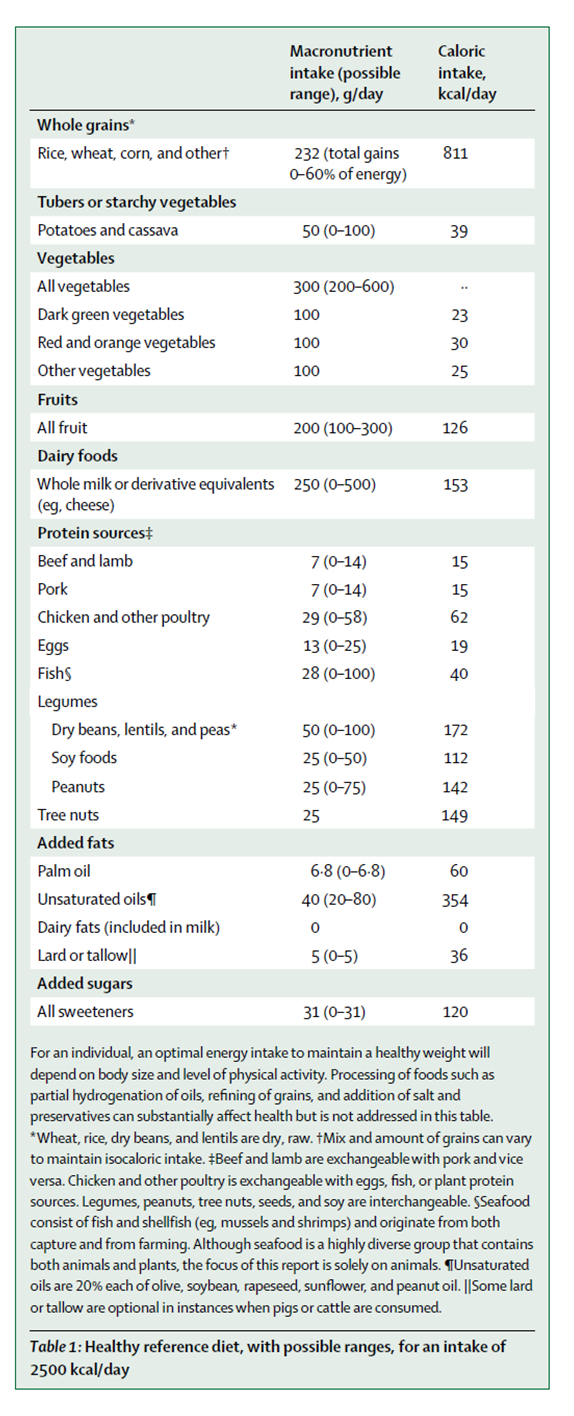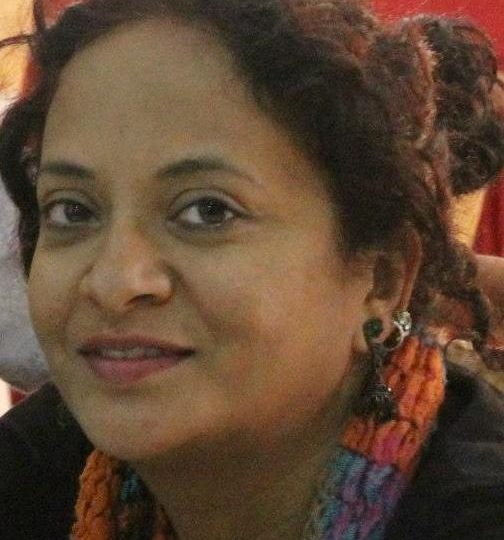Dr. Sylvia Karpagam
The Eat Lancet Commission on Food, Planet, Health was launched on April 4, 2019 at the Food Safety and Standards Authority of India (FSSAI) headquarters, New Delhi, India with the question “Can we feed a future population of 10 billion people a healthy diet within planetary boundaries?’. Dr. Brent Loken from the EAT forum “set the context’ and introduced the key findings of the report and Dr. Lawrence Haddad, Executive director, Global Alliance for Improved Nutrition (GAIN) delivered the keynote address. Dr. K. Srinath Reddy, President of Public Health Foundation of India (PHFI) and Dr. Sunita Narain, Centre for Science and Environment (CSE) are the two Indian representatives on the 37 member Eat Lancet Commission.
The report is filled with untruths, half-truths and unscientific jargon. It is shocking that no objections have been raised either by Dr. Srinath Reddy or Sunita Narain who have lent legitimacy as official representatives of India to a report that can only push India into further malnutrition than it is already reeling under. Some overtly problematic aspects of the report are highlighted here.
The report states that “The scientific targets set by this Commission provide guidance for the necessary shift, which consists of increasing consumption of plant-based foods and substantially reducing consumption of animal source foods”. It is alarming that a group of 37 individuals handpicked from different countries are creating targets and dietary prescriptions which the Indian government agencies such as FSSAI are going along with. Brent Loken lauds India for being a good ‘example to show the world’ about plant-based food, because a lot of protein sources here apparently come from plants. Has he no idea of the stunting, chronic energy deficiency, anemia and multiple other nutritional deficiencies in India? He talks about ‘holding on to Indian traditions’ of plant-eating as though India has no meat-eaters. For a country with almost 80% meat-eaters, these false notions only serve the purpose of reinforcing age old casteist control of food policy making by the vegetarians of the country, while erasing and criminalising the eating habits of the majority.
He also suggests that consumption of dairy should go down to zero and that Indian diets already fall into the ‘target’ set by the Commission. What is “Indian diet’?? Is it some homogenous diet that is devoid of caste, culture, religion, geographic and economic implications? Is the Chronic Energy Deficient Indian a ‘target’? Or is it the stunted child? Or maybe it is the anemic adolescent?

Cartoon byDr. Sylvia Karpagam
Lawrence Haddad of the Global Alliance for Improved Nutrition (GAIN) which was a co-host for the launch of the report said that red meat production should reduce drastically. He also talks about ‘targeting’ adolescents through the government mid-day meal scheme and how this is good for the food industry. “We have to GET to the adolescents’ We have to ‘shape’ their diets. In a country where food is the rallying point of all kinds of life-threatening and unscientific casteist imposition, this kind of language is offensive to say the least. In addition, is he not aware that livestock and poultry offer crucial financial and nutritional protection to small farmers and households during economic crisis or periods of food shortage? It is worth noting that GAIN is pushing for large scale fortification of grains and oils, which FSSAI is promoting and which largely benefits five multinationals. This large-scale fortification intervention has been widely criticised. A Cochrane review shows that fortification of rice makes little or no difference to addressing anemia or Vitamin A deficiency. While animal source foods are systematically being erased as a solution to the malnutrition crisis in the country, essential nutrients that can be ensured through consumption of animal meats, poultry, eggs, fish, dairy etc. are being extracted by companies and added onto grains and oils. Brent Loken adds “It is the protein source that has drawn the most controversy – where should we be getting our protein from? Is it from animal source foods or is it from plant source foods? This is where I think India has got such a great example. A lot of the protein sources come from plants. So, I think India has an example that they can show the world”.
The Commission, in its report, states that it has excluded young children between age 0-2 years from their recommendations because this group has “unique requirements to support rapid growth and development, but their diets have only minor effects on food systems because they constitute a small proportion of a stable population and have low absolute food requirements”. First of all, it is ridiculous to divide food eating practices into age groups. Children get socialised into eating practices of their families and community. The report says that children less than 2 years can be given foods that support their growth, but this is not required after age 2. Are they not aware that children grow rapidly right into adolescence and need nutrient dense foods? Should children be given meat, eggs, dairy and poultry upto 2 years and denied these subsequently? Will children have to be given food different from what their parents and other family members eat? Will a three-year-old sibling be denied an egg which is given to a two-year-old child? These recommendations cut right into the traditional cultures of eating and sharing within families.
Further the report says that “Adolescent girls are at risk of iron deficiency because of rapid growth combined with menstrual losses. Menstrual losses have sometimes been a rationale for increased consumption of red meat, but multivitamin or multimineral preparation provide an alternative that is less expensive and without adverse consequences of high red meat intake”. Are they seriously suggesting that young girls should be put on medication to address nutritional deficiencies? Anemia cannot be addressed only with iron supplementation. Good quality proteins are essential for the formation of haemoglobin. How do the authors hope to provide the protein source? From a bottle? Similarly for pregnant women, their recommendation is that “Although inclusion of some animal source foods in maternal diets is widely considered important for optimal fetal growth and increased iron requirement, especially during the third trimester of pregnancy, evidence suggests that balanced vegetarian diets can support healthy fetal development, with the caveat that strict vegan diets require supplements of vitamin B12”
Further the report claims that ‘traditional diets’ in countries like India include little red meat which might be consumed only on special occasions or as minor ingredients of mixed dishes. Also ‘some of these cultures have also consumed few or no dairy foods, often corresponding with lactose intolerance and lower rates of bone fracture than have countries with high dairy consumption”.
According to their recommendation (see table), the calories from beef, pork or lamb should be 15 kcal/day, 62 kcal/day from chicken and other poultry, 19kcal/day from eggs, 40 from fish 40, 112 from soy food, 354 from unsaturated oils, 120 from added sugars and zero from dairy.
 Rockstrom, another author of this report says “As nations urbanise and people become wealthier, traditional meals are being replaced by Western-style resource-intensive foods high in calories, protein, and animal-based foods, such as meats and dairy”. He also says “Grain-fed largescale beef industry is the beginning of the end (of a sustainable planet) and India can show the world how traditional diets high in seeds, nuts, vegetables, whole grains and legumes can provide sustainable nutrition without wrecking the planet,”
Rockstrom, another author of this report says “As nations urbanise and people become wealthier, traditional meals are being replaced by Western-style resource-intensive foods high in calories, protein, and animal-based foods, such as meats and dairy”. He also says “Grain-fed largescale beef industry is the beginning of the end (of a sustainable planet) and India can show the world how traditional diets high in seeds, nuts, vegetables, whole grains and legumes can provide sustainable nutrition without wrecking the planet,”
These statements are neither factual nor evidence based and are patently mischievous. The meat-eating culture of India is not ‘Western style’. Several communities have eaten meat in different forms from generations. The polemical argument that India is traditionally vegetarian and that meat eating is “Western’ helps buy into the larger argument that somehow negative western influences should be resisted in an attempt to further the myth of India as a vegetarian nation. Beef is sometimes the cheapest nutrient dense food available for marginalised communities in India but there is often a vast difference between what people would like to consume and what they consume in reality, because of innumerable barriers around caste, religion, culture, cost, geography etc. Unscientific cattle slaughter bans across the country have pushed many, particularly from marginalised and vulnerable communities, into economic destitution. That the Eat Lancet group is capitalising on these vulnerabilities of already marginalised communities is shameful to say the least.
The report further states that legume consumption has traditionally been high in many cultures such India. However, the fact is that legumes are often expensive and often not available as part of the National Food Security Act (NFSA), in spite of purportedly being the ‘best’ source of protein. These are neither the best quality source of proteins nor are they consumed in sufficient amounts. Their bioavailability for proteins, vitamins and minerals is of inferior quality. To ignore these nuances is to further place communities at risk by sanctioning what is evidently an inadequate diet. The Eat Lancet authors have failed to factor this ‘cheap vegetarianism’ as an important cause for most of India’s malnutrition.
A bizarre statement in the report “Because protein is consumed as a part of foods that contain fat and many other constituents that affect health, protein food sources, or packages, should be considered when investigating or making food choices” seems to push for packaged foods, which are loaded with trans-fats, additives, preservatives etc. as a source of protein!! They add “Although most foods contain some protein, meat, dairy, fish, eggs, legumes (including soy), and nuts (including peanuts) are high in protein and often considered as alternatives to one another in many culinary traditions”. Who considers these as alternatives to one another? Is it nutritionists in India? Such frivolous statements take away the different ways that proteins are available to humans. Animal source foods are the most bioavailable form of protein and to pretend that they are easily interchangeable with plant sourced proteins is deliberate attempt to mislead and misrepresent.
While stating the undeniable fact that fish provides essential omega 3 fatty acids associated with reduced risk of cardiovascular disease and that ‘high intakes are associated with excellent health”, this Commission suggests an intake ranging from 0-100 g/day. If omega 3 from fish reduces risk of cardiovascular disease and is associated with excellent health, why would any Commission recommend an intake of zero grams/day? Then just to make sure that they don’t forget to mention plant source foods, they go on to say “Plant sources of α-linolenic acid can (not ‘will’) provide an alternative to omega-3 fatty acids, but the quantity required is not clear.” Is this how dietary recommendations should be made? In effect, what they say is that there is evidence to show that fish provides essential nutrients, but we suggest you eat plants because these are available in plenty, although we don’t know what the benefits of plants are!!
“Eggs” according to the report “are a widely available source of high-quality protein and other essential nutrients needed to support rapid growth.” And that “In low income countries, replacing calories from a staple starchy food with an egg can substantially improve the nutritional quality of a child’s diet and reduce stunting. They recommend an intake of eggs at about 13 g/day, or about 1·5 eggs per week, for the reference diet, while stating that “ higher intake might be beneficial for low-income populations with poor dietary quality.” Then they make a cryptic statement “Isocaloric substitution of plant protein sources for eggs might therefore reduce risk of non-communicable diseases.” It is almost as if the authors, in the face of overwhelming benefits of eggs, somehow feel the need to nevertheless criminalise the food because it goes against their pet prejudices. Proteins are required for growth and repair of almost all body tissues which means pretty much the entire life time of an individual including the in-utero period and there has been no nutritionally equivalent alternative to the quality proteins provided by eggs.
About lab grown ‘meats’, the authors say “In-vitro meat production from cultured animal stem cells is being developed as an alternative to traditional meat. The health effects of these new foods are unclear, but nutritional composition of invitro meat is more readily modifiable than that of conventional meat”. This statement is again mischievous and places some advantage to invitro meat while glossing over the fact that this is a deliberate ploy to hand over our entire food system and food sovereignty to a few companies with adverse consequences on local foods, culture, tradition and cost of food.
While quoting evidence to show that high carbohydrate diets are associated with increased mortality, increases blood triglyceride concentration, reduced HDL cholesterol concentration, and increases blood pressure, especially in individuals with insulin resistance, they also say that “Grains are the largest source of energy in almost all diets worldwide. Refining grains causes major loss of nutrients and fibre, which has important health implications”. They therefore make it appear like, without refining, grains would somehow get transformed into magic foods. The fact is that with or without refining, grains by themselves are nutritionally inadequate and deficient in many essential nutrients.
The report has many other pitfalls that have been critiqued by international researchers. What is important for us to understand is that this caste corporate collusion pushes an unscientific, corporate dependent, plant food based, nutritionally inadequate diet on vulnerable, Dalit Bahujan communities of the country. This can further affect them economically, nutritionally and socially, apart from destroying traditional and nutrient rich eating practices.
~~~
Dr. Sylvia Karpagam is a public health doctor and researcher who works on the social determinants of health, specifically caste and nutrition.









